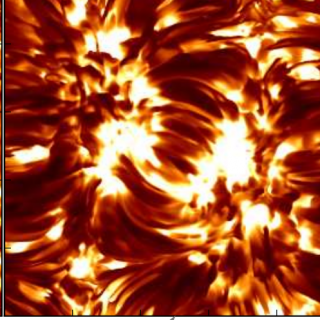Bibcode
Asensio Ramos, A.; de la Cruz Rodríguez, J.; Martínez González, M. J.; Socas-Navarro, H.
Referencia bibliográfica
Astronomy and Astrophysics, Volume 599, id.A133, 10 pp.
Fecha de publicación:
3
2017
Revista
Número de citas
36
Número de citas referidas
36
Descripción
Context. Solar chromospheric fibrils, as observed in the core of strong
chromospheric spectral lines, extend from photospheric field
concentrations suggesting that they trace magnetic field lines. These
images have been historically used as proxies of magnetic fields for
many purposes. Aims: Use statistical analysis to test whether the
association between fibrils and magnetic field lines is justified. Methods: We use a Bayesian hierarchical model to analyze several tens
of thousands of pixels in spectro-polarimetric chromospheric images of
penumbrae and chromospheric fibrils. We compare the alignment between
the field azimuth inferred from the linear polarization signals through
the transverse Zeeman effect and the direction of the fibrils in the
image. Results: We conclude that, in the analyzed fields of view,
fibrils are often well aligned with the magnetic field azimuth. Despite
this alignment, the analysis also shows that there is a non-negligible
dispersion. In penumbral filaments, we find a dispersion with a standard
deviation of 16°, while this dispersion goes up to 34° in
less magnetized regions.
Proyectos relacionados

Magnestismo Solar y Estelar
Los campos magnéticos son uno de los ingredientes fundamentales en la formación de estrellas y su evolución. En el nacimiento de una estrella, los campos magnéticos llegan a frenar su rotación durante el colapso de la nube molecular, y en el fin de la vida de una estrella, el magnetismo puede ser clave en la forma en la que se pierden las capas
Tobías
Felipe García

Magnetismo, Polarización y Transferencia Radiativa en Astrofísica
Los campos magnéticos están presentes en todos los plasmas astrofísicos y controlan la mayor parte de la variabilidad que se observa en el Universo a escalas temporales intermedias. Se encuentran en estrellas, a lo largo de todo el diagrama de Hertzsprung-Russell, en galaxias, e incluso quizás en el medio intergaláctico. La polarización de la luz
Ernest
Alsina Ballester